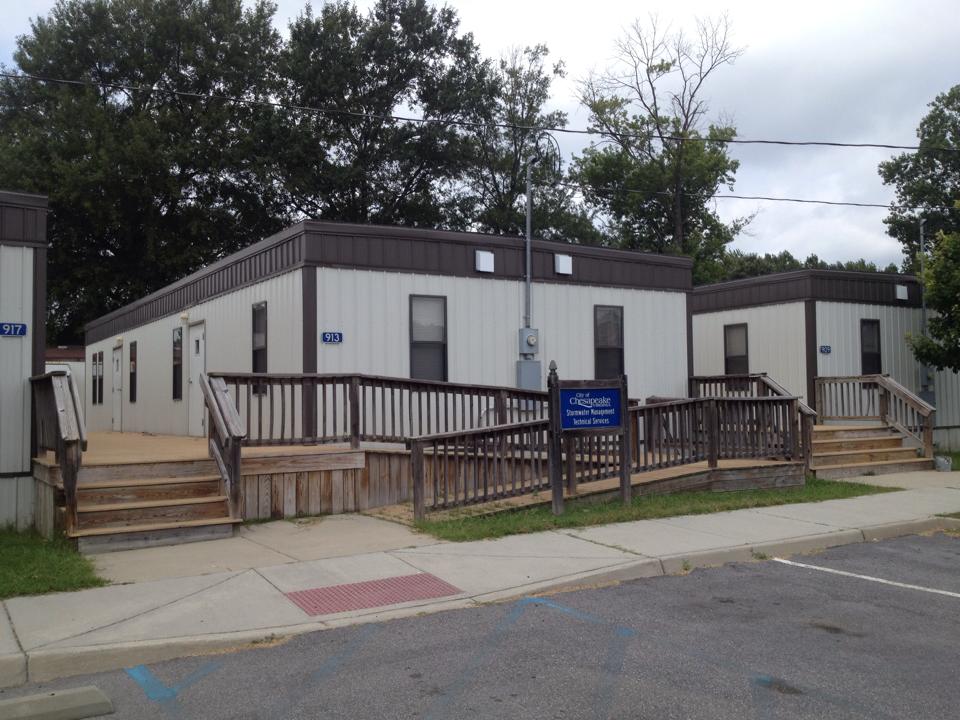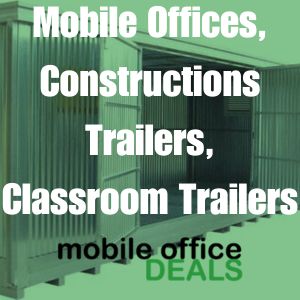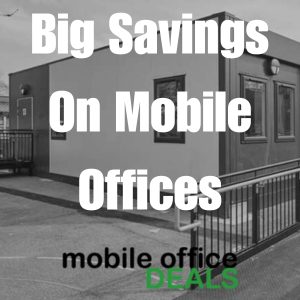
Exploring the Deep Savings of Modular Office Buildings in 2024
As we venture further into 2024, the commercial real estate landscape continues to evolve, with modular office buildings leading the charge in innovation and cost savings. These structures have gained prominence for their ability to combine efficiency, flexibility, and eco-friendliness in a way traditional office buildings cannot match. This blog dives into the realm of modular offices, comparing them with their traditional counterparts, dissecting their costs, and unraveling the substantial savings they offer. As businesses adapt to changing economic conditions and environmental concerns, modular office buildings emerge as a compelling solution, redefining the concept of workspace efficiency and sustainability.
What are Modular Office Buildings?
Modular office buildings are prefabricated structures assembled from modules created in a factory setting. These modules, which can be complete rooms or parts of a larger space, are transported to the building site and assembled to form a fully functional office space. This method contrasts sharply with traditional construction practices, where the entire building process occurs on-site from foundation to finish.
The key characteristics of modular office buildings include:
- Speed of Construction: Modules can be fabricated concurrently with site preparation, significantly reducing project timelines.
- Cost Efficiency: Factory settings reduce waste and allow for more controlled construction costs.
- Flexibility and Scalability: Modular buildings can be easily expanded, reduced, or reconfigured to meet changing business needs.
- Sustainability: Prefabrication reduces material waste and energy consumption during construction, contributing to a lower environmental footprint.
By offering these advantages, modular office buildings appeal to a wide range of businesses seeking efficient, flexible, and sustainable office solutions.

Comparison with Traditional Office Buildings
The contrast between modular and traditional office buildings is stark, touching upon nearly every aspect of their conception, construction, and utilization. Here are the key areas where they differ:
Cost
One of the most compelling arguments for modular office buildings is their cost-effectiveness. Traditional construction often involves unforeseen expenses, from delays due to weather to cost overruns. Modular construction, on the other hand, benefits from the predictability of factory production, which not only streamlines the budget but also significantly reduces labor costs. Modular office buildings can be 10-20% less expensive than traditional construction, depending on the project and location.
Time to Build
Modular buildings can be constructed 30-50% faster than traditional buildings. The simultaneous progression of site work and module construction in a controlled factory environment can shave months off a project’s timeline. This expedited process means businesses can occupy their space sooner, translating to faster operational commencement and revenue generation.
Customization and Scalability
A common misconception is that modular buildings offer limited customization. On the contrary, modular office buildings can be tailored to a wide range of architectural styles and functional needs. Moreover, they offer unparalleled scalability; additional modules can be added or removed as business needs evolve, making them a flexible option for growing companies.
Environmental Impact
Modular construction shines in sustainability. The controlled factory environment reduces waste significantly through precise material usage and recycling capabilities. Furthermore, the energy efficiency of modular buildings is often higher due to better insulation and construction techniques, leading to lower operational costs and a smaller carbon footprint.


Average Costs to Rent or Buy
In 2024, the landscape of office space rental and purchase continues to adapt to economic fluctuations and changing business dynamics. Modular office buildings offer a cost-effective alternative to traditional spaces, with several factors influencing their market rates:
- Size and Complexity: The more extensive or complex the modular office, the higher the cost. Prices can range significantly based on these factors, but modular offices generally offer a lower price per square foot.
- Location: Geographic location plays a critical role in the cost, with prices varying widely across different regions.
- Customization: Tailored designs and specific features can impact the final price, though modular offices still often present savings compared to custom-built traditional spaces.
On average, renting a modular office space might cost between $15 to $35 per square foot per year, depending on the factors mentioned. For purchasing, costs can vary from $100 to $200 per square foot, making modular offices an attractive option for both short-term and long-term space solutions.
Major Cost-Saving Benefits
The financial advantages of modular office buildings extend beyond just the initial costs of construction or rental. The major cost-saving benefits include:
- Reduced Construction and Assembly Time: Faster construction and assembly translate to lower labor costs and earlier occupation dates.
- Minimal Disruption: The speed and efficiency of modular construction mean less disruption to existing operations, a particularly valuable aspect for businesses expanding their facilities.
- Energy Efficiency: Lower operational costs through better insulation and modern construction techniques can result in significant savings on utility bills.
- Depreciation: For businesses that purchase modular buildings, the potential for quicker depreciation can offer tax advantages over traditional buildings.


Versatile Uses of Modular Offices
Modular office buildings cater to a diverse array of industries and needs, from temporary construction site offices to permanent corporate headquarters. Their adaptability allows them to serve various functions, including:
- Startup Hubs: Modular offices can provide affordable, scalable options for startups and tech companies.
- Educational Facilities: Schools and universities can utilize modular buildings for classrooms, offices, and labs.
- Healthcare: Fast deployment makes modular offices ideal for clinics, laboratories, and administrative buildings.
- Retail Spaces: Modular construction can offer quick, effective solutions for retail businesses looking to expand or relocate.
Size Considerations for Mobile Office Buildings
Choosing the right size for a modular office building is a critical decision that can significantly impact its functionality, cost-effectiveness, and adaptability to future needs. This section will outline a strategic approach to determining the optimal size for a modular office, ensuring businesses can make the most out of their investment.
Understanding Business Needs and Growth Projections
Current Needs Assessment
Begin by assessing your current space requirements. Consider the number of employees, necessary office departments, common areas, meeting rooms, and any specialized spaces such as labs or storage areas. It’s also crucial to think about communal spaces like kitchens and restrooms. A thorough assessment helps in creating a baseline for the minimum space necessary.
Future Growth Considerations
Forecasting your business’s growth over the next 5 to 10 years is essential. While modular offices offer flexibility, planning for future expansion or contraction from the outset can save significant time and resources. Consider potential increases in staff, the need for more specialized areas, or the possibility of downsizing.


Evaluating Modular Office Configurations
Standard Configurations
Modular office buildings come in various standard configurations, from single-story layouts to multi-story complexes. Explore these options to understand what might best suit your immediate and future needs.
Customization Options
One of the advantages of modular construction is the ability to customize layouts. If standard configurations do not meet your needs, consider working with a manufacturer to design a custom solution. This might involve additional costs but can provide a tailored fit for your business.
Space Efficiency and Design Flexibility
Efficient Use of Space
Efficient space planning is crucial, especially in modular construction. Consider an open-plan layout for flexibility, using movable partitions to create temporary private areas as needed. Ensure that the design promotes productivity and aligns with your company culture.
Flexibility for Future Modifications
Choose a modular office design that allows for easy modifications. This could mean selecting a structure that can be easily expanded by adding more modules or one that can be reconfigured internally without significant construction work.
Cost Considerations
Budgeting for Size
The size of your modular office will directly impact its cost, both in terms of initial investment and ongoing operational expenses. Larger spaces may provide more flexibility but will also cost more to purchase, assemble, and maintain.
Energy Efficiency and Maintenance
Larger spaces can lead to higher costs for heating, cooling, and maintenance. When choosing the size of your modular office, consider energy-efficient designs and materials that can help mitigate these costs.



Legal and Zoning Requirements
Before finalizing the size of your modular office, it’s essential to understand any legal or zoning restrictions that may apply. Local regulations may limit the size or type of structure you can install on your property. Ensure compliance to avoid potential issues that could impact your project timeline or budget.
Decision-Making Tools and Resources
Consult with Experts
Engaging with architects, modular building manufacturers, and even real estate consultants can provide valuable insights into choosing the right size for your modular office. These experts can offer advice tailored to your specific needs and industry trends.
Utilize Software and Modeling Tools
There are various software tools available that can help visualize different sizes and layouts of modular offices. These tools can be invaluable in the decision-making process, allowing you to explore various scenarios and their implications on space utilization and cost.
Modular office buildings represent a revolutionary shift in the way businesses think about office space. Their comparison with traditional office buildings highlights a range of benefits, from cost savings to environmental sustainability. As the world continues to evolve, these modern, efficient, and adaptable spaces stand ready to meet the changing needs of industries worldwide, marking a significant step forward in the evolution of workplace environments.
